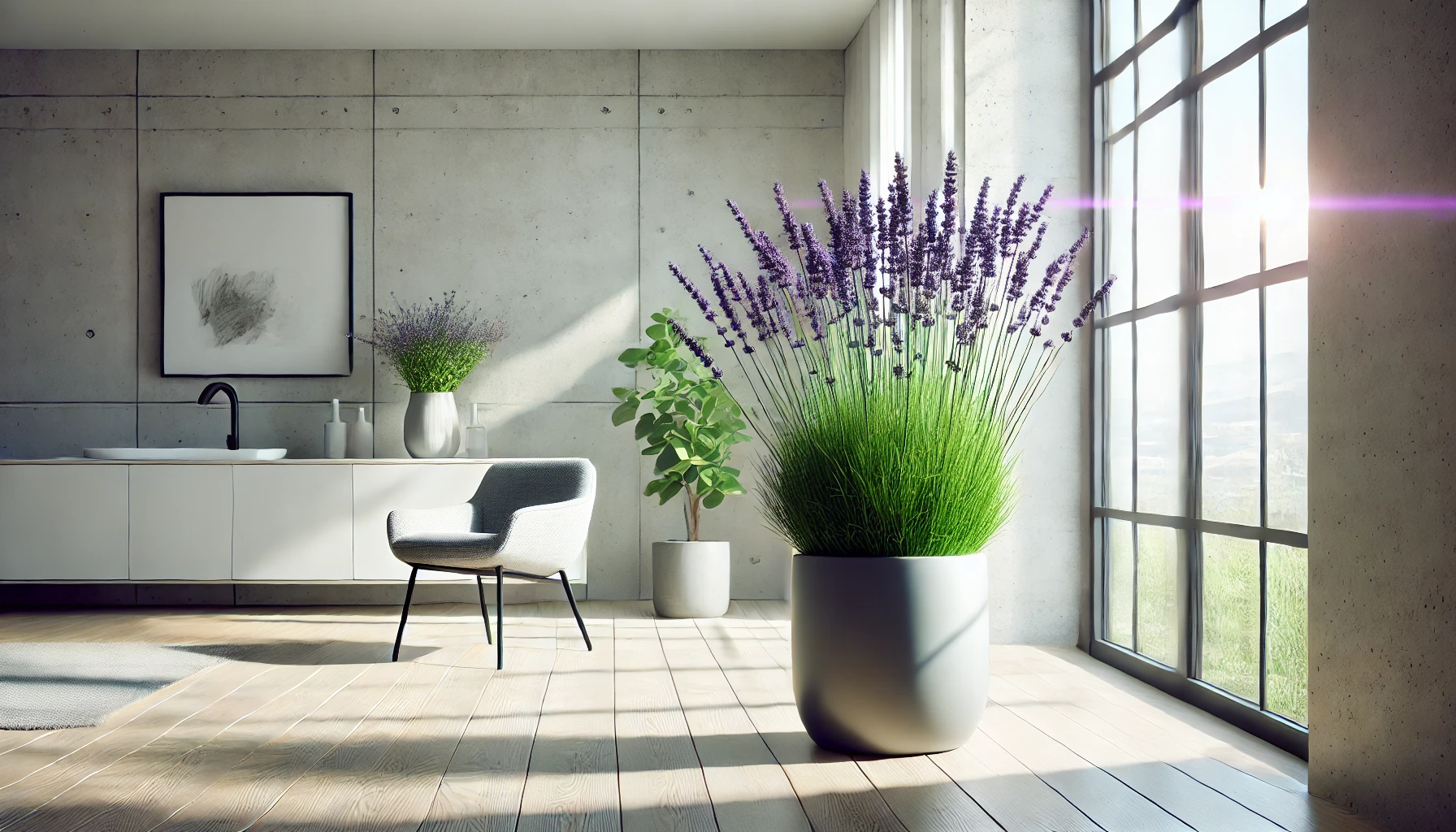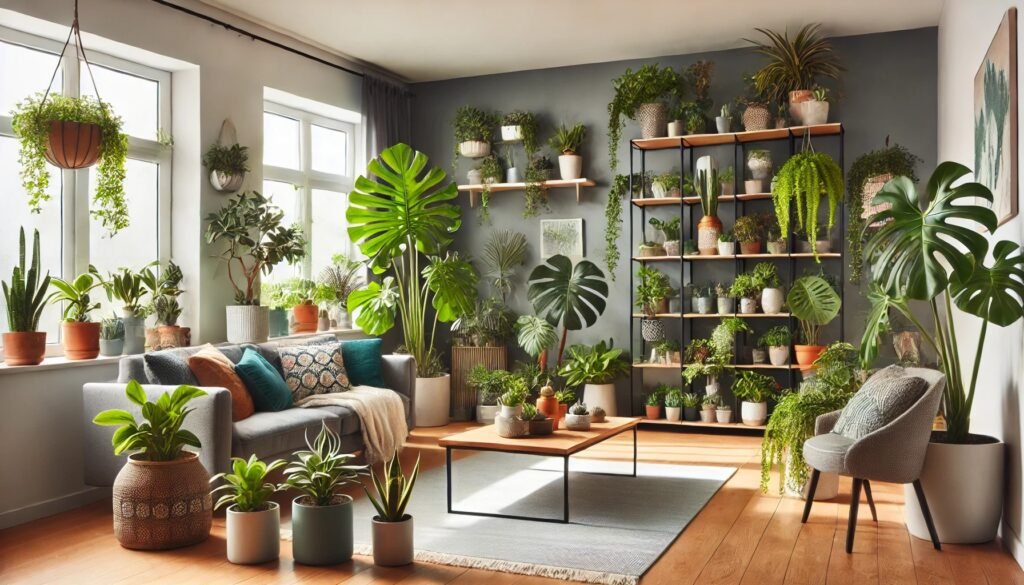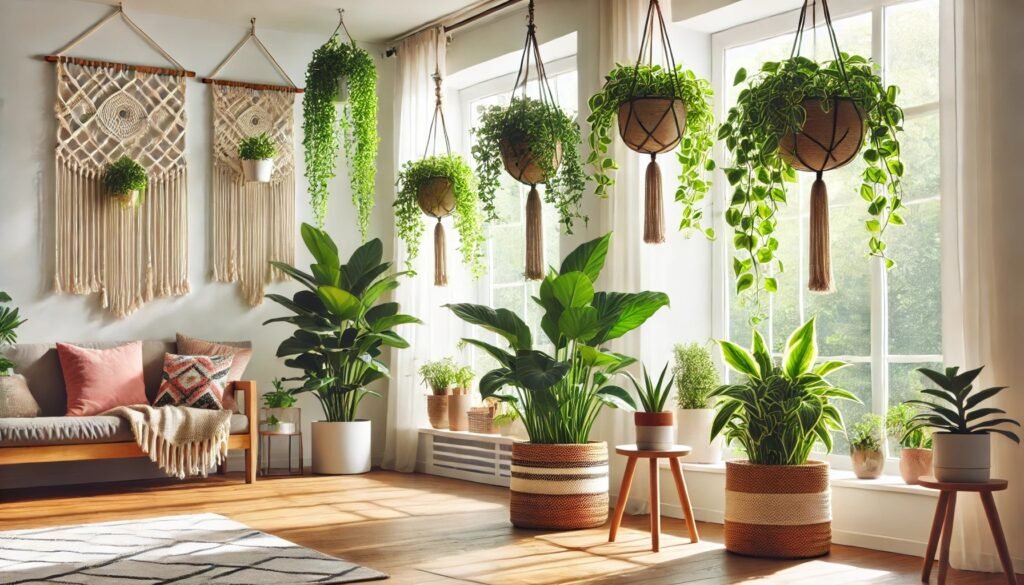
Lavender (Lavandula angustifolia) is much more than just a beautiful flowering plant. Known for its soothing fragrance, this versatile herb offers a range of benefits, from medicinal uses to culinary delights. Whether you’re looking to reduce stress, improve your sleep, or add a touch of elegance to your home, lavender can do it all. Plus, it’s relatively easy to grow indoors and outdoors, making it a favorite among gardeners of all skill levels.
Let’s explore lavender’s many uses, its natural habitat, and how to grow and care for this wonderful herb indoors.
Natural Habitat and Where Lavender Grows Best

Lavender naturally thrives in Mediterranean regions. It’s native to countries like Spain, France, Italy, and parts of North Africa. These areas have a warm, dry climate, and lavender is well-suited for these conditions. While it prefers full sun and well-drained soil, lavender can also grow in regions with slightly cooler climates, as long as it doesn’t experience too much humidity.
When growing lavender at home, try to mimic its natural environment by giving it plenty of sunlight and keeping the soil relatively dry.
Medicinal Benefits of Lavender
Lavender has been used for centuries in traditional medicine. One of its most popular uses today is in aromatherapy, where its essential oil is praised for its calming effects. If you’re feeling stressed or anxious, just a few drops of lavender oil in a diffuser can help create a relaxing atmosphere.
In addition to reducing stress, lavender also promotes better sleep. Many people find that using lavender sprays or placing a sachet of dried lavender near their bed helps improve sleep quality. Lavender oil can even be applied topically to relieve headaches or reduce muscle pain.
It’s not just about relaxation, though. Lavender has antibacterial and antifungal properties, which make it an excellent natural remedy for skin issues like acne, eczema, and minor burns. Lavender oil is often applied to small wounds to aid healing.
Culinary Uses: Is Lavender Edible?

Yes, lavender is edible, but it should be used sparingly in cooking. Its strong floral flavor can easily overpower a dish if too much is added. However, when used correctly, lavender adds a delightful aromatic twist to both sweet and savory dishes.
Lavender is commonly used in baking, where it pairs well with lemon, honey, and rosemary. You might also find it in herbal teas, often mixed with chamomile or mint. In French cuisine, lavender is sometimes included in the Herbes de Provence blend, which is used to season meats and vegetables.
If you’re new to cooking with lavender, start small. A little goes a long way, and you can always add more if needed.
Is Lavender Safe for Pets?
Lavender is generally considered safe for pets when used in moderation. However, the essential oil form can be toxic if ingested in large amounts, especially for cats and dogs. While the plant itself isn’t as harmful, it’s still a good idea to keep your pets from nibbling on it.
If you’re using lavender essential oil in a diffuser, make sure the room is well-ventilated and that your pets can leave the area if they feel uncomfortable. Always consult with your veterinarian before using essential oils around your pets.
How to Grow and Care for Lavender Indoors
Lavender is well-suited for indoor growing, as long as it receives plenty of sunlight and good airflow. Let’s dive into the best practices for keeping your lavender plant happy and thriving indoors.
Light and Temperature
Lavender loves sunlight. Place your lavender plant in a sunny window that gets at least six hours of direct sunlight daily. South-facing windows are ideal. If you don’t have enough natural light, consider using a grow light to supplement.
Lavender prefers temperatures between 60°F and 75°F (15°C to 24°C). It’s important to avoid placing it near drafty windows or heating vents, as sudden temperature changes can stress the plant.
Watering and Humidity
One of the keys to successful lavender care is not overwatering. Lavender is drought-tolerant and prefers its soil to dry out between waterings. Water your plant when the top inch of soil feels dry to the touch. Be sure to use a pot with drainage holes to prevent water from sitting at the bottom, as this can lead to root rot.
Lavender thrives in dry air and doesn’t need high humidity, so it’s perfect for indoor environments where the air might be a little dry.
Soil and Feeding
Lavender needs well-draining soil to mimic its natural Mediterranean habitat. A sandy or loamy soil mix is ideal, and you can even mix in a bit of coarse sand or perlite to improve drainage. Avoid using heavy soils, as they retain too much water and can lead to root issues.
When it comes to feeding, lavender doesn’t need a lot of fertilizer. In fact, too much fertilizer can lead to excessive foliage growth with fewer blooms. A light feeding with a balanced, slow-release fertilizer in the spring is enough to keep your lavender plant healthy.
Pruning and Deadheading
Pruning is essential for keeping your lavender plant in shape and encouraging new growth. The best time to prune is in early spring before new growth begins. Cut back about one-third of the plant’s height to promote a bushier appearance and more blooms.
Deadheading, or removing spent flowers, is also important. By cutting off dead flowers, you encourage the plant to produce more blooms throughout the season.
Propagation
Lavender is easy to propagate through cuttings. In late spring or early summer, take a 4- to 6-inch cutting from a healthy stem, remove the lower leaves, and place it in well-draining soil. Keep the soil moist, and roots should begin to develop in a few weeks. Propagation is a great way to expand your lavender collection or share it with friends.
Common Problems and Remedies
While lavender is relatively easy to care for, it can occasionally run into problems. The most common issue is overwatering, which can lead to root rot. If you notice yellowing leaves or a wilting plant, check the soil moisture and adjust your watering habits.
Lavender is also susceptible to pests like aphids and spider mites. These pests can be managed by spraying the plant with a mild insecticidal soap or neem oil.
Final Thoughts
Lavender is a wonderful plant to have in your home, whether you’re drawn to its calming fragrance, medicinal properties, or culinary potential. It’s easy to grow indoors with the right care, and its versatility makes it a must-have for any plant enthusiast. Just remember to give it plenty of sunlight, keep the soil on the dry side, and prune it regularly to keep it in top shape.
With proper care, lavender will reward you with its soothing aroma and beautiful blooms for years to come.
Stay connected with the world of plants! Subscribe to Phylofy for expert gardening tips, DIY projects, and eco-friendly inspiration. Join our community and nurture your love for nature. Don’t miss exclusive content and updates. Subscribe now!



